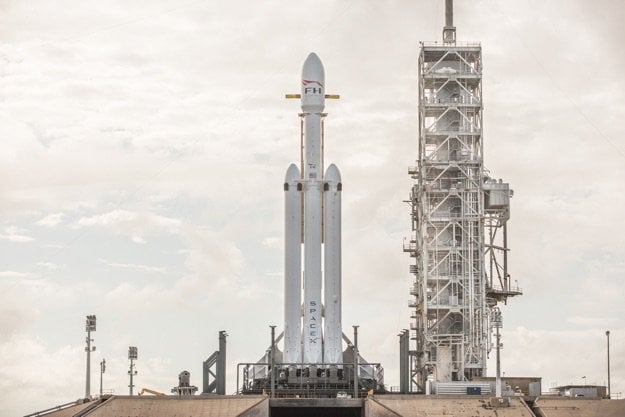SpaceX Completes Historic Falcon Heavy Static Fire Test, First Flight Set For Early February

Falcon Heavy hold-down firing this morning was good. Generated quite a thunderhead of steam. Launching in a week or so. pic.twitter.com/npaqatbNir
— Elon Musk (@elonmusk) January 24, 2018
The Falcon Heavy is a towering presence, sitting in all its monstrous glory on the LC-39A launchpad -- the very same launchpad that was used to send astronauts to the moon courtesy of Saturn V rockets. Falcon Heavy consists of three primary Falcon 9 cores, each containing 9 Merlin engines. When all 27 engines light up, Falcon Heavy produces 5.13 million pounds of thrust at liftoff.
First static fire test of Falcon Heavy complete—one step closer to first test flight! pic.twitter.com/EZF4JOT8e4
— SpaceX (@SpaceX) January 24, 2018
SpaceX calls Falcon Heavy the most powerful rocket on the planet, and with good reason:
The liftoff thrust of the Falcon Heavy equals approximately eighteen 747 aircraft at full power. Falcon Heavy can lift the equivalent of a fully loaded 737 jetliner--complete with passengers, luggage and fuel--to orbit. Only the Saturn V moon rocket, last flown in 1973, delivered more payload to orbit than Falcon Heavy.
Falcon Heavy is capable of putting up to a 140,660-pound payload into low-earth orbit, or 58,860 pounds into a geostationary transfer orbit. If you're looking to get cargo to Mark Watney on Mars, that figure drops to 37,040 pounds.
For its first mission, which could take place in early February according to Musk, the nose cone of Falcon Heavy houses Musk's own first-generation Midnight Cherry Tesla Roadster. Given that Musk isn't 100 percent certain that the maiden voyage of Falcon Heavy will go off without a hitch, he'd rather put his own "precious cargo" aboard rather than a satellite from a paying customer.


